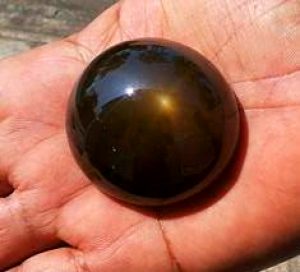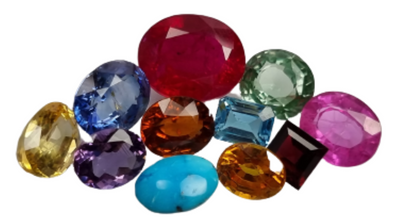
Ekanite: Gemstones Information
In 1961, a green translucent water-worn stone showing some asterism, found some years earlier in a Sri Lanka gravel pit, was published as a new mineral with the composition Ca2ThSi8O20. The color was dark, dull green and the specimen was found to be metamict and radioactive, emitting alpha, beta and gamma radiation. Ekanite occurs in poorly formed prismatic crystals of the tetragonal system. The hardness is 4.5–5 and the SG in the range 2.95–3.36. The RI (uniaxial but may be biaxial) is 1.595–1.597, 1.580–1.568, negative. A crystalline (i.e. non-metamict) variety of ekanite has been recovered from a glacial syenitic boulder in the Tombstone Mountains in Yukon Territory, Canada.
Justification for the name ‘ekanite’ being used for this variety of the mineral was based on identity of its chemical composition with that of type specimens from Sri Lanka and the exact correspondence of its X-ray powder pattern with that given by samples of the metamict material to which crystallinity had been restored by heat treatment. The crystalline mineral is straw-yellow in color when pure, though sometimes dark red owing to inclusions. The largest crystals are only some 2 or 3 mm in length and are tetragonal in symmetry.
RIs were measured as 1.568 and 1.580 for the extraordinary and ordinary rays respectively. The measured SG of 3.08 was much lower than the calculated figure of 3.36, owing to impurities and inclusions. The name given to the mineral was derived from that of its original discoverer in Sri Lanka, and the data given above for the crystallized form of the mineral were taken from a paper by Szymanski et al. in Canadian Mineralogist (1982).




